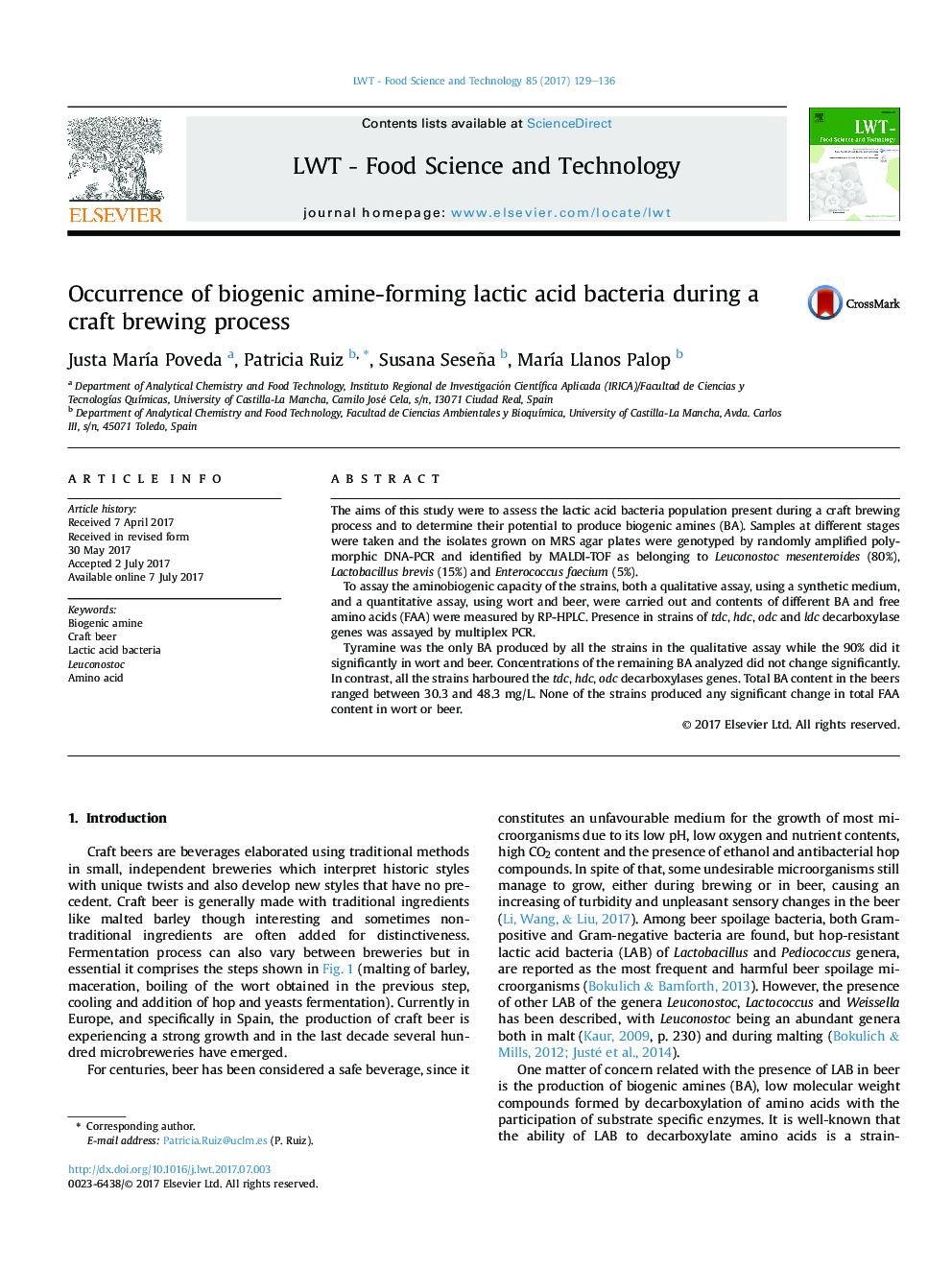| Article ID | Journal | Published Year | Pages | File Type |
|---|---|---|---|---|
| 5768441 | LWT - Food Science and Technology | 2017 | 8 Pages |
â¢Ln. mesenteroides, L. brevis and E. faecium were identified in a craft beer process.â¢All the strains harboured the tdc, hdc and odc genes and none the ldc gene.â¢Most of the strains significantly increased tyramine concentration in wort and beer.â¢This is one of few studies reporting Ln. mesenteroides species as tyramine producer.
The aims of this study were to assess the lactic acid bacteria population present during a craft brewing process and to determine their potential to produce biogenic amines (BA). Samples at different stages were taken and the isolates grown on MRS agar plates were genotyped by randomly amplified polymorphic DNA-PCR and identified by MALDI-TOF as belonging to Leuconostoc mesenteroides (80%), Lactobacillus brevis (15%) and Enterococcus faecium (5%).To assay the aminobiogenic capacity of the strains, both a qualitative assay, using a synthetic medium, and a quantitative assay, using wort and beer, were carried out and contents of different BA and free amino acids (FAA) were measured by RP-HPLC. Presence in strains of tdc, hdc, odc and ldc decarboxylase genes was assayed by multiplex PCR.Tyramine was the only BA produced by all the strains in the qualitative assay while the 90% did it significantly in wort and beer. Concentrations of the remaining BA analyzed did not change significantly. In contrast, all the strains harboured the tdc, hdc, odc decarboxylases genes. Total BA content in the beers ranged between 30.3 and 48.3Â mg/L. None of the strains produced any significant change in total FAA content in wort or beer.
